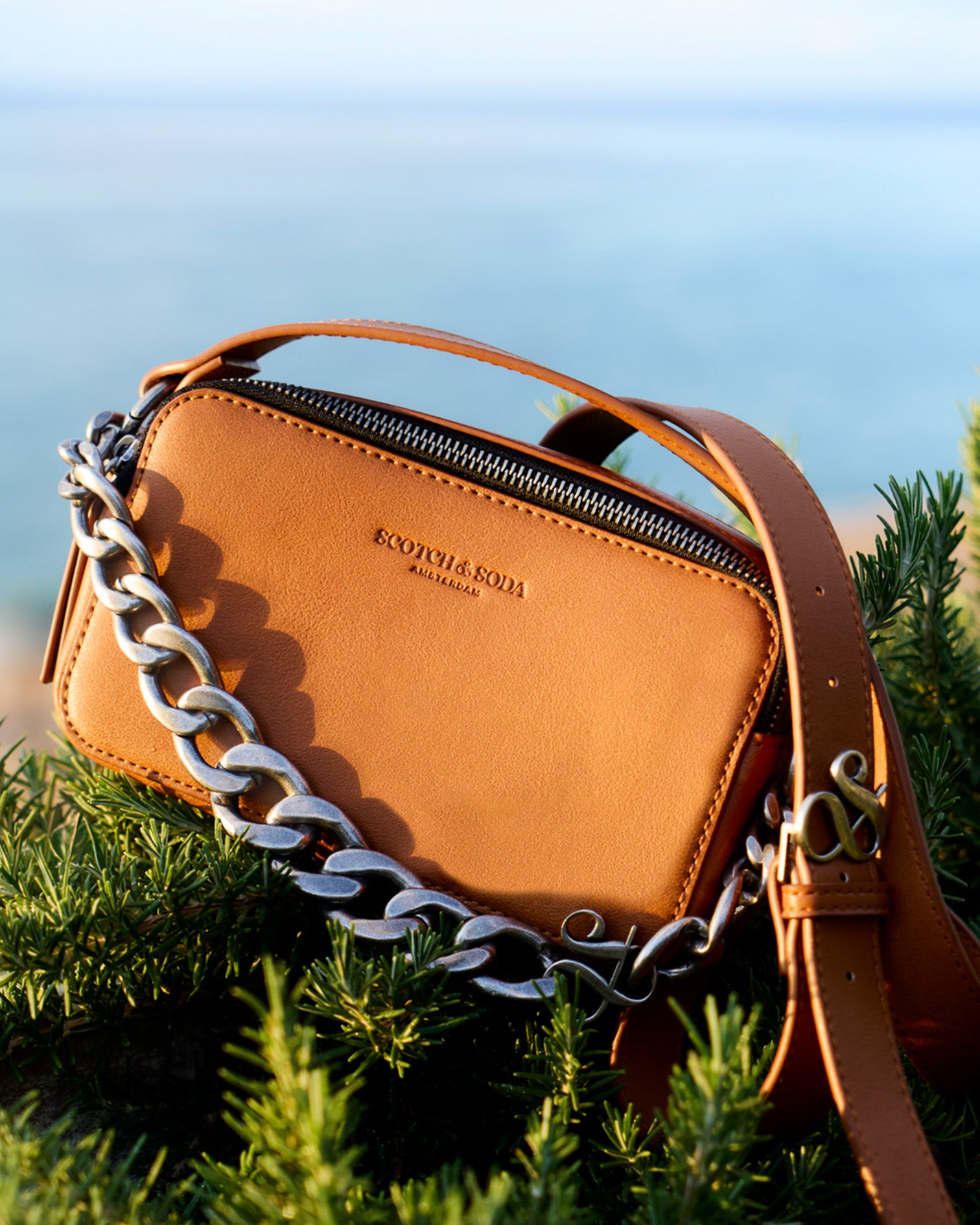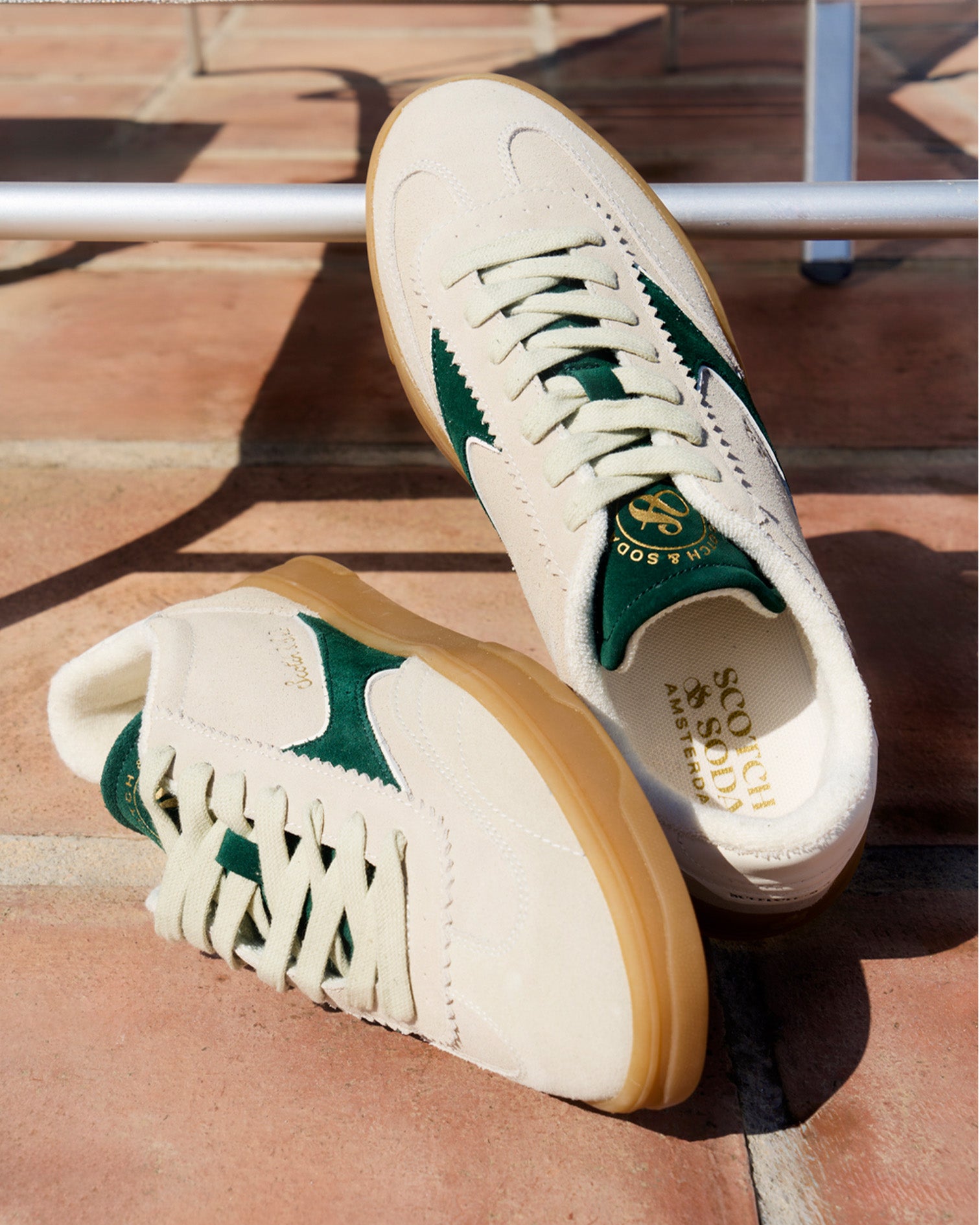Looking after the pieces you buy keeps them looking their best for longer, which is better for your wardrobe and the environment. Follow our simple care guide for advice on delicates, denim, outerwear, wool, leather, underwear and swimwear – and always check the care label.
Care Guide
DENIM
- Denim is rooted in workwear, a durable hard-wearing fabric that doesn't need to be washed that often, and by choosing to wash less you save on water and energy. In fact, wearing in denim without washing helps to develop natural fades and lines, which give your denim character and make your jeans unique to you.
- Between washes, treat stains by spot cleaning them: use a clean damp cloth and, if needed, a small amount of mild detergent directly on the stain, then blot to remove excess.
- To freshen up your denim, air them outside, hang in a steamy bathroom or pop them into the freezer for a couple of hours to get rid of bacteria and odours.
- When it's time to wash, pre-washed denim should be washed inside out by hand or in the washing machine. Indigo can bleed, so wash alone or with similar colours.
- Raw denim should ideally be washed by immersing in a bath of water, although a gentle machine wash on a cold cycle would work too. Always use a mild detergent.Indigo can bleed, so wash alone.
- To dry, simply hang your denim to dry naturally. Avoid putting your denim in the dryer as this can damage the elastane, which is what helps your denim to stretch and recover.
OUTERWEAR
- If your outerwear becomes wet, dry thoroughly in a warm room, but do not put it directly onto a heat source, like a radiator.
- If your item is described as being water-repellent, it has been treated with a durable finish that keeps the fabric from becoming saturated, as water beads on the surface. Extend the wear and functionality of your piece by maintaining it every season with a specialist PFC-free water-repellent spray. This spray can also be used if water no longer beads on the surface.
- Once a season, check buttons and fastenings are tightly secured and keep any spares in a safe place for future repairs.
- Our advice would be to only wash a jacket if necessary, following the care instructions.
- To restore the loft of padded jackets, tumble dry with a few tennis balls.
DENIM
- Denim is rooted in workwear, a durable hard-wearing fabric that doesn't need to be washed that often, and by choosing to wash less you save on water and energy. In fact, wearing in denim without washing helps to develop natural fades and lines, which give your denim character and make your jeans unique to you.
- Between washes, treat stains by spot cleaning them: use a clean damp cloth and, if needed, a small amount of mild detergent directly on the stain, then blot to remove excess.
- To freshen up your denim, air them outside, hang in a steamy bathroom or pop them into the freezer for a couple of hours to get rid of bacteria and odours.
- When it's time to wash, pre-washed denim should be washed inside out by hand or in the washing machine. Indigo can bleed, so wash alone or with similar colours.
- Raw denim should ideally be washed by immersing in a bath of water, although a gentle machine wash on a cold cycle would work too. Always use a mild detergent.Indigo can bleed, so wash alone.
- To dry, simply hang your denim to dry naturally. Avoid putting your denim in the dryer as this can damage the elastane, which is what helps your denim to stretch and recover.
OUTERWEAR
- If your outerwear becomes wet, dry thoroughly in a warm room, but do not put it directly onto a heat source, like a radiator.
- If your item is described as being water-repellent, it has been treated with a durable finish that keeps the fabric from becoming saturated, as water beads on the surface. Extend the wear and functionality of your piece by maintaining it every season with a specialist PFC-free water-repellent spray. This spray can also be used if water no longer beads on the surface.
- Once a season, check buttons and fastenings are tightly secured and keep any spares in a safe place for future repairs.
- Our advice would be to only wash a jacket if necessary, following the care instructions.
- To restore the loft of padded jackets, tumble dry with a few tennis balls.
UNDERWEAR & SWIMWEAR
- Underwear and swimwear are both items that you wear close to your body, so to clean these items thoroughly you'll need to wash them a little warmer than your body temperature. We recommend a 40C wash in a mesh washing bag.
- Swimwear needs a little extra care; after swimming, rinse with cold water to remove any salt or chlorine.
UNDERWEAR & SWIMWEAR
- Underwear and swimwear are both items that you wear close to your body, so to clean these items thoroughly you'll need to wash them a little warmer than your body temperature. We recommend a 40C wash in a mesh washing bag.
- Swimwear needs a little extra care; after swimming, rinse with cold water to remove any salt or chlorine.
WOOL
- Woollen items do not need to be washed often and can be maintained by spot cleaning and airing.
- When the time comes to wash, always check the care instructions, paying particular attention to the temperature, and use a low spin cycle.
- Use a mild or specialist wool detergent, then gently reshape whilst damp and dry flat to prevent stretching.
- Pilling – small bobbles on the surface of an item – is normal, caused by loose fibres rubbing together during wear. They can easily be removed by using a special wool comb.
- To keep woollen items in shape, don't hang but fold them, and, between seasons, use products to protect against moths.
WOOL
- Woollen items do not need to be washed often and can be maintained by spot cleaning and airing.
- When the time comes to wash, always check the care instructions, paying particular attention to the temperature, and use a low spin cycle.
- Use a mild or specialist wool detergent, then gently reshape whilst damp and dry flat to prevent stretching.
- Pilling – small bobbles on the surface of an item – is normal, caused by loose fibres rubbing together during wear. They can easily be removed by using a special wool comb.
- To keep woollen items in shape, don't hang but fold them, and, between seasons, use products to protect against moths.
LEATHER
- Keep away from humidity, heat and chemicals.
- Avoid contact with sharp objects or rough surfaces, which could mark, scratch or damage it.
- Protect your leather item from the rain, but if it does become wet, air-dry at room temperature and never dry directly on a heat source, like a radiator.
- Remove light stains with a damp cloth and seek advice from a specialist leather dry cleaner for all other care needs.
LEATHER
- Keep away from humidity, heat and chemicals.
- Avoid contact with sharp objects or rough surfaces, which could mark, scratch or damage it.
- Protect your leather item from the rain, but if it does become wet, air-dry at room temperature and never dry directly on a heat source, like a radiator.
- Remove light stains with a damp cloth and seek advice from a specialist leather dry cleaner for all other care needs.
DELICATES
- Delicates are made from materials that need a little extra attention, like silk, viscose, linen or cupro, or those that have a special embroidery, embellishment or trim. Some can be machine washed, others need to be washed by hand, and some are dry-clean only. Always follow the instructions on the care label.
- Don't wash your item after every wear – instead freshen them up by airing outside or try wearing a fitted cotton top underneath, so you wash the base layer rather than the delicate item.
- When it's time to wash – and it is machine-washable – choose the delicate cycle, which is designed to be less abrasive. Check the temperature setting and use a mesh bag to help protect the item during the washing cycle.
- For hand-wash items, wash in cold water using a special detergent for delicates and avoid stretching the garment when wet. An easy tip to avoid this is to roll the hand-washed garment in a clean towel and press out the excess water, remove from the towel, and dry flat.
- To ease creasing between wears, hang in a steamy bathroom, and when ironing, follow the temperature instructions.
- For dry-clean only items, seek specialist advice.
- Pay attention to storing these items and be careful when wearing with other garments that have a sharp or rough surface, as it can snag or mark the delicate fabric.
DELICATES
- Delicates are made from materials that need a little extra attention, like silk, viscose, linen or cupro, or those that have a special embroidery, embellishment or trim. Some can be machine washed, others need to be washed by hand, and some are dry-clean only. Always follow the instructions on the care label.
- Don't wash your item after every wear – instead freshen them up by airing outside or try wearing a fitted cotton top underneath, so you wash the base layer rather than the delicate item.
- When it's time to wash – and it is machine-washable – choose the delicate cycle, which is designed to be less abrasive. Check the temperature setting and use a mesh bag to help protect the item during the washing cycle.
- For hand-wash items, wash in cold water using a special detergent for delicates and avoid stretching the garment when wet. An easy tip to avoid this is to roll the hand-washed garment in a clean towel and press out the excess water, remove from the towel, and dry flat.
- To ease creasing between wears, hang in a steamy bathroom, and when ironing, follow the temperature instructions.
- For dry-clean only items, seek specialist advice.
- Pay attention to storing these items and be careful when wearing with other garments that have a sharp or rough surface, as it can snag or mark the delicate fabric.






